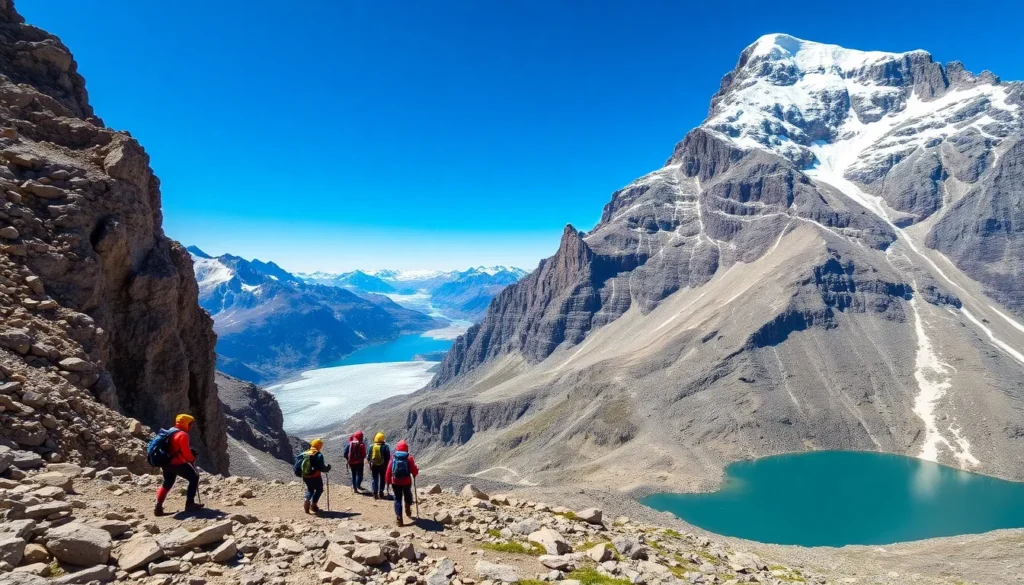Table of Contents
ToggleImagine waking up to a different view every day—mountains one morning, a beach the next. The nomadic lifestyle promises freedom and adventure, but what about the cost? It’s not just about packing your bags and hitting the road; it’s about budgeting for the journey ahead.
From accommodation to food and transportation, the expenses can add up faster than a squirrel on caffeine. Understanding the financial side of nomadic life is crucial for anyone looking to trade their 9-to-5 for a passport and a backpack. So, let’s dive into the nitty-gritty of nomadic living costs and discover how to make your wanderlust dreams a reality without breaking the bank. Who knew budgeting could be this much fun?
Understanding Nomadic Life Cost
Nomadic living attracts many with the promise of diverse experiences. Recognizing the financial aspects becomes essential for maintaining this lifestyle sustainably.
What Is Nomadic Living?
Nomadic living involves moving from place to place, often without a permanent home base. Individuals engaged in this lifestyle prioritize mobility and flexibility, allowing them to explore various cultures and environments. They often live in different countries or cities for extended periods. This approach to life emphasizes adventure and personal growth while requiring smart financial planning.
Key Expenses for Nomads
Housing costs remain a primary concern. Options vary from short-term rentals to hostels and camping. Transportation expenses typically entail flights, buses, or car rentals to navigate between destinations. Food expenditures fluctuate based on location and personal preferences, ranging from dining out to cooking in shared kitchens. Additional costs can include health insurance, visa fees, and travel gear. Understanding these expenses helps individuals budget effectively, ensuring their nomadic lifestyle remains enjoyable and financially feasible.
Accommodation Costs
Understanding accommodation costs is essential for anyone adopting a nomadic lifestyle. Numerous factors influence these expenses, ranging from the type of housing to geographic location.
Options for Housing
Various housing options cater to nomads. Hostels offer affordability and social interaction. Short-term rentals provide a home-like atmosphere with amenities, ideal for longer stays. Camping can save money if amenities are minimal. House sitting enables free lodging in exchange for caretaking services. Each option presents unique benefits and drawbacks that suit different budgets and preferences.
Comparing Costs Across Locations
Accommodation costs vary drastically between locations. Major cities tend to command higher prices, while rural areas often provide economical choices. For example, renting a room in a luxury city can reach up to $1,500 monthly, while similar accommodations in smaller towns may average $500. Prices also fluctuate based on seasonality; tourist hotspots often increase rents during peak seasons. Exploring multiple regions helps identify the most affordable options for a nomadic budget.
Travel Expenses
Nomadic living entails various travel expenses that include transportation choices and the frequency and duration of travels. Understanding these costs helps in budgeting effectively for a mobile lifestyle.
Transportation Choices
Transportation options significantly influence a nomad’s budget. Flights tend to be the more expensive option but offer quicker travel between countries. Buses and trains provide affordable alternatives, especially in regions like Southeast Asia and Europe, where fares can be quite low. Ridesharing services like Uber or local taxis offer convenience, though prices vary by location. Additionally, rental cars might be suitable for exploring remote areas, but fuel prices can add up quickly. Choosing the right mode of transport allows for better control over travel expenses.
Frequency and Duration of Travel
Travel frequency and duration also impact total costs. Short trips to nearby destinations can minimize expenses, while longer journeys often require more extensive planning and budget allocation. Many nomads opt for longer stays in one location to reduce accommodation and transportation expenses. For instance, spending a month in a city can lower costs associated with frequent moving. Balancing travel frequency with available resources ensures sustainable living while exploring diverse cultures and environments. Adapting travel habits according to budget constraints enhances the overall nomadic experience.
Daily Living Expenses
Daily living expenses significantly impact a nomadic lifestyle. Understanding these costs helps maintain a budget while enjoying travel experiences.
Food and Dining Costs
Food expenses vary widely based on location and personal preferences. Street food often provides affordable options in many countries, while dining in restaurants can quickly add up. Cooking meals in shared kitchens can further reduce costs, especially in hostels or rented apartments. For instance, one might spend $5 to $15 per day on groceries, whereas restaurant meals could range from $10 to $50 based on the city. Prioritizing local cuisines and markets often leads to more enjoyable and budget-friendly dining experiences.
Healthcare and Insurance
Healthcare poses essential considerations for nomads. Travel insurance plays a critical role in safeguarding against unexpected medical expenses. Costs for health insurance can range from $40 to $200 monthly, depending on coverage and destination. Access to medical facilities can also vary dramatically, with some countries offering lower fees for medical services than others. Staying informed about local healthcare systems enhances safety, allowing for better financial planning. Understanding these healthcare aspects ensures that nomads can travel with confidence and peace of mind.
Income Strategies for Nomads
Exploring various income sources enhances financial stability while embracing a nomadic lifestyle. Nomads often tap into remote work opportunities and seasonal jobs to sustain their travels.
Remote Work Opportunities
Many nomads find success in remote work opportunities, leveraging skills in areas like writing, graphic design, and programming. Freelance platforms such as Upwork and Fiverr connect skilled individuals with clients worldwide. By focusing on online teaching or consulting, nomadic professionals expand their income potential while maintaining location independence. Remote work provides flexibility, allowing for a balanced schedule that accommodates travel plans. Networking within industry-specific communities can lead to consistent job prospects, influencing overall income strategy.
Seasonal Jobs and Gigs
Seasonal jobs and gigs offer additional avenues for income during travels. Many nomads secure work in hospitality, agriculture, or tourism, typically experiencing peak demand in summer or winter months. Positions like ski instructors or fruit pickers can provide short-term but lucrative opportunities. Local job boards and platforms like CoolWorks facilitate finding these types of jobs. By engaging in temporary roles, nomads gain new experiences while supporting their travel budgets effectively. Seasonal work also fosters connections within local communities, enriching the overall nomadic experience.
Embracing a nomadic lifestyle offers incredible opportunities for adventure and personal growth. However it requires careful financial planning to ensure sustainability. By understanding the various costs associated with accommodation transportation and daily living expenses nomads can make informed choices that enhance their travel experiences.
Balancing budget constraints with travel aspirations is key. With the right strategies in place nomads can enjoy diverse cultures and environments while maintaining financial stability. Whether through remote work or seasonal gigs the possibilities for income are vast. Ultimately the nomadic life can be both fulfilling and affordable with the right approach to budgeting.







